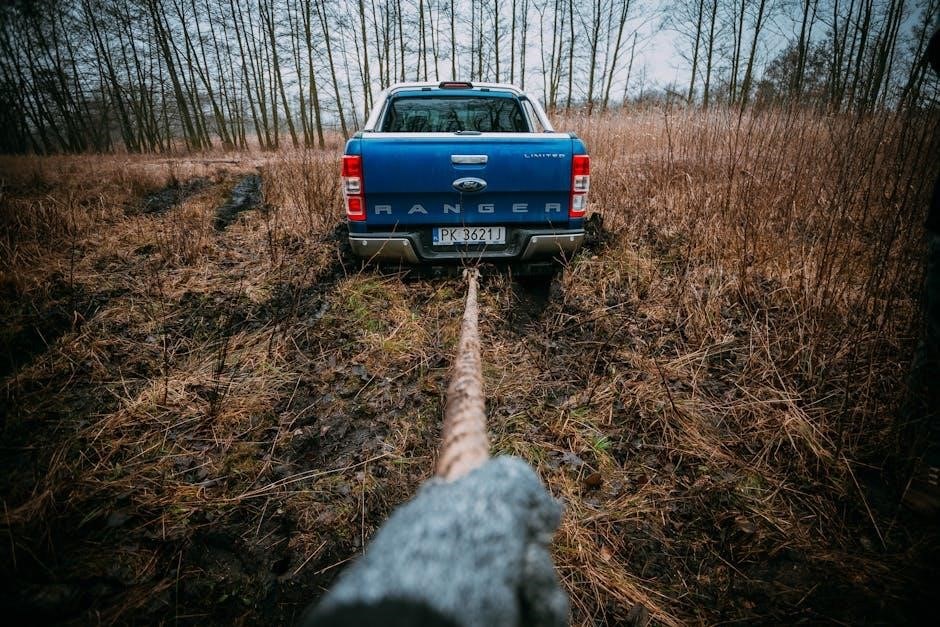
If your Ford Ranger isn’t factory-equipped with an integrated trailer brake controller‚ you can install an aftermarket one․ These kits usually include the controller‚ wiring harness‚ instructions‚ and mounting hardware․ Popular brands are REDARC‚ Curt and Tekonsha․ The installation process is relatively straightforward․
Understanding Trailer Brake Controllers for Ford Rangers
Trailer brake controllers are essential safety components for Ford Rangers towing trailers equipped with electric brakes․ These controllers synchronize the trailer’s brakes with the Ranger’s brakes‚ ensuring smooth and controlled stopping power․ Without a properly functioning brake controller‚ towing a heavy trailer can be dangerous‚ leading to increased stopping distances and potential loss of control․
Electric trailer brakes rely on an electrical signal from the brake controller to activate the trailer’s braking system․ The controller monitors the Ranger’s braking activity and sends a proportional signal to the trailer brakes‚ applying them simultaneously with the vehicle’s brakes․ This synchronized braking action minimizes the risk of trailer sway and improves overall stability․
Understanding the different types of trailer brake controllers available is crucial for selecting the right one for your Ford Ranger․ Time-delayed controllers apply the trailer brakes after a set delay‚ while proportional controllers apply the brakes in proportion to the Ranger’s braking force․ Proportional controllers are generally preferred for their smoother and more responsive braking performance․
When choosing a trailer brake controller‚ consider the weight and braking requirements of the trailer you’ll be towing․ Ensure that the controller is compatible with your Ranger’s electrical system and meets all applicable safety standards․ A properly installed and calibrated trailer brake controller can significantly enhance the safety and control of your Ford Ranger while towing․
Identifying Your Ford Ranger’s Towing Package
Determining whether your Ford Ranger is equipped with a factory towing package is the first step before installing a trailer brake controller․ The towing package typically includes essential components such as a trailer hitch receiver‚ wiring harness‚ and sometimes‚ even a pre-wired connector for a brake controller․
Visually inspect the rear of your Ranger for a factory-installed trailer hitch receiver․ This is a clear indication that your vehicle may have a towing package․ Next‚ check for a seven-way connector near the hitch․ This connector provides the necessary electrical connections for trailer lights‚ brakes‚ and other functions․
If you’re unsure‚ consult your Ranger’s owner’s manual or the original window sticker․ These documents will list all the factory-installed options and packages‚ including the towing package; You can also contact a Ford dealership and provide them with your vehicle’s VIN (Vehicle Identification Number)․ They can access your Ranger’s build sheet and confirm whether it has the towing package․
Even if your Ranger has a towing package‚ it may not include a pre-wired connector for a trailer brake controller․ In this case‚ you’ll need to locate the brake controller wiring harness under the dash and connect it to the aftermarket controller․ Identifying your Ranger’s towing package ensures you have the necessary components and wiring for a successful brake controller installation․
OEM vs․ Aftermarket Trailer Brake Controller Options
When considering a trailer brake controller for your Ford Ranger‚ you have two primary options: Original Equipment Manufacturer (OEM) and aftermarket controllers․ Each offers distinct advantages and disadvantages‚ depending on your needs and preferences․
OEM controllers‚ like the Ford VKB3Z-2C006-A kit‚ are designed specifically for your Ranger․ This ensures seamless integration with the vehicle’s electrical system and dashboard․ OEM controllers often feature a clean‚ factory-installed appearance and may integrate with the Ranger’s SYNC system for advanced settings and monitoring․
Aftermarket controllers‚ from brands like REDARC‚ Curt‚ and Tekonsha‚ provide a wider range of features and price points․ These controllers can be installed in various locations and offer adjustable gain settings for optimal braking performance․ Aftermarket options can be more budget-friendly and offer more customization;
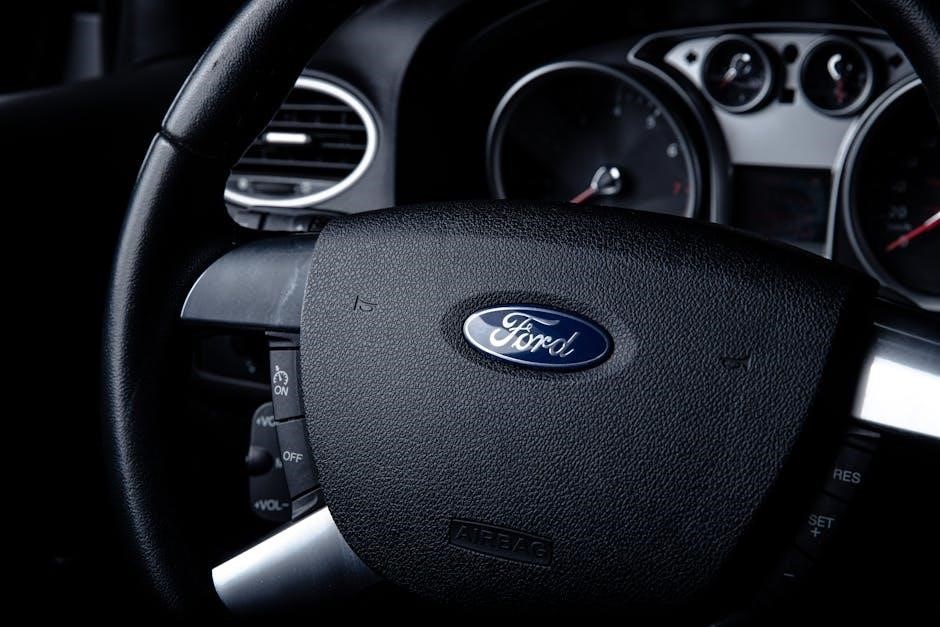
The choice between OEM and aftermarket depends on your priorities․ If you value seamless integration and a factory look‚ OEM is a solid choice․ If you prioritize cost savings‚ customization‚ and a broader selection of features‚ aftermarket controllers are worth considering․ Researching user reviews can help you determine the best option․
Required Tools and Materials for Installation
Before embarking on the installation of a trailer brake controller in your Ford Ranger‚ gathering the necessary tools and materials is crucial for a smooth and successful process․ Having everything on hand will save time and prevent frustration․
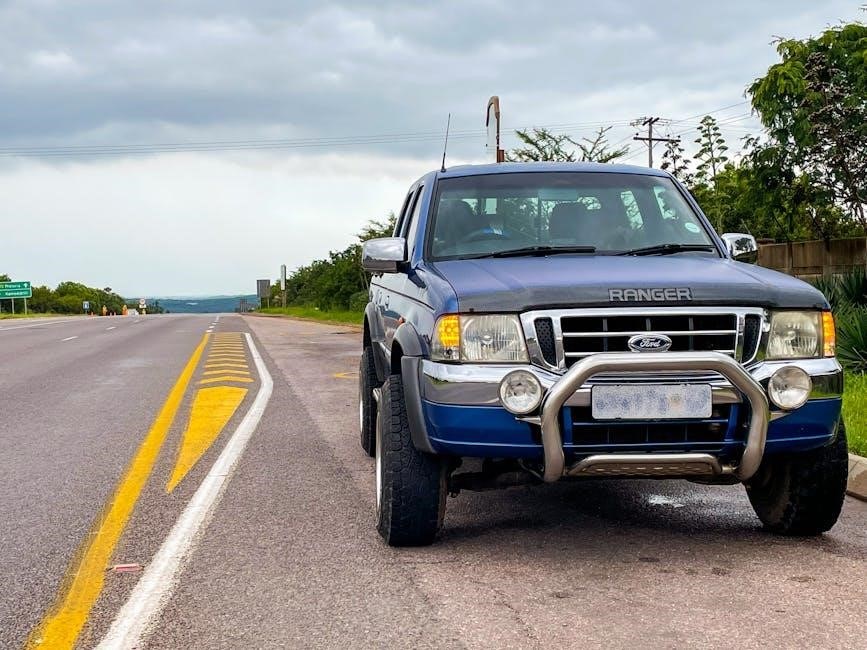
First‚ you’ll need the trailer brake controller kit itself‚ whether OEM or aftermarket․ Ensure it includes the controller unit‚ wiring harness‚ and any mounting hardware․ Essential tools include a wire stripper‚ crimping tool‚ multimeter‚ socket set‚ and screwdrivers (both Phillips and flathead)․ A drill with various drill bits may be required for mounting the controller․
Additional materials include electrical tape‚ zip ties‚ and possibly a circuit tester․ A trim removal tool can be helpful for accessing wiring harnesses without damaging interior panels․ Safety glasses and gloves are recommended for personal protection․
Carefully review the instructions included with your chosen brake controller kit to ensure you have all the specified tools and materials․ Having a well-prepared workspace with adequate lighting will also contribute to a successful installation․
Locating the Trailer Brake Controller Wiring Harness in Your Ranger
Finding the trailer brake controller wiring harness in your Ford Ranger is a critical first step in the installation process․ Typically‚ the harness is located under the dashboard‚ often on the driver’s side․ The exact location can vary depending on the year and trim level of your Ranger․
Start by inspecting the area near the steering column and the kick panel to the left of the driver’s footrest․ Look for a bundle of wires‚ often taped together with blue tape or secured with zip ties․ The connector you need will typically have four wires: one for power‚ one for ground‚ one for the brake signal from the brake pedal‚ and one for the output to the trailer brakes․
Consult your Ford Ranger’s owner’s manual or a vehicle-specific wiring diagram for the precise location and wire color codes․ If you’re having trouble finding the harness‚ consider using a flashlight to improve visibility․ Once located‚ carefully disconnect any securing tape or ties to access the connector․
Step-by-Step Installation Guide for Aftermarket Controllers
Installing an aftermarket trailer brake controller in your Ford Ranger involves a series of precise steps to ensure proper functionality and safety․ Begin by gathering all necessary tools and materials‚ including the brake controller unit‚ wiring harness‚ wire connectors‚ a multimeter‚ and basic hand tools․ Disconnect the negative terminal of your Ranger’s battery to prevent electrical shorts during the installation․
Next‚ locate the trailer brake controller wiring harness under the dash‚ as described previously․ Connect the aftermarket controller’s wiring harness to the corresponding wires in your Ranger’s harness․ Typically‚ this involves matching wire colors or using the wiring diagram provided with your controller․
Secure the connections using wire connectors or by soldering the wires together‚ ensuring a solid and reliable connection․ Mount the brake controller unit in a location that is easily accessible and visible to the driver‚ typically under the dash or on the center console․
Connecting the Wiring Harness
Connecting the wiring harness is a crucial step in installing your trailer brake controller․ Begin by identifying the four essential wires: power‚ ground‚ brake signal‚ and output to the trailer brakes․ The power wire typically connects to the Ranger’s battery‚ providing the necessary voltage for the controller to operate․ Ensure this connection is fused for safety․
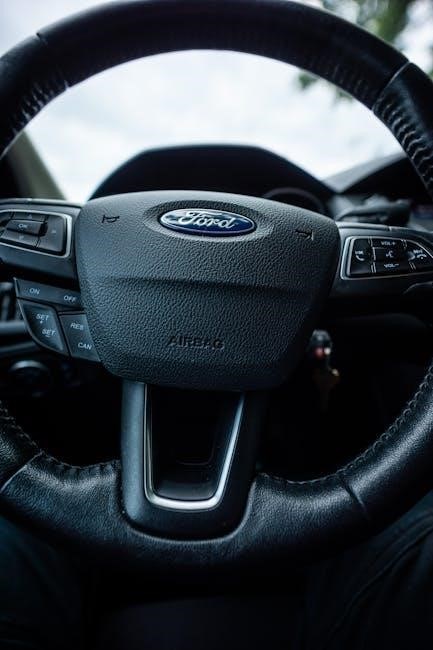
The ground wire should be securely connected to a clean‚ unpainted metal surface on the Ranger’s chassis to provide a reliable ground path․ The brake signal wire taps into the Ranger’s brake light circuit‚ activating the trailer brakes when the brake pedal is pressed․ The output wire runs to the 7-way trailer connector at the rear of the vehicle‚ carrying the braking signal to the trailer’s electric brakes․
Use appropriate wire connectors or solder to make secure and insulated connections․ Poor connections can lead to malfunctions or even fire hazards․
Mounting the Brake Controller Unit
Choosing the right mounting location for your trailer brake controller is important for both accessibility and safety․ The controller should be within easy reach of the driver‚ allowing for manual adjustments while towing․ However‚ it should not obstruct the driver’s view or interfere with the operation of any vehicle controls․
A common mounting location is under the dashboard‚ typically to the right of the steering column․ Ensure the mounting surface is sturdy and can support the weight of the controller․ Use the mounting bracket provided with the controller to securely attach it to the chosen location․ Some controllers may require drilling holes for mounting screws‚ so take care to avoid damaging any wiring or components behind the dashboard․
Once the controller is mounted‚ double-check that it is firmly in place and does not move or vibrate during driving․ A loose controller can be distracting and may affect its performance․
Configuring the Trailer Brake Controller Settings in SYNC
Many newer Ford Ranger models feature SYNC‚ Ford’s infotainment system‚ which integrates with the trailer brake controller․ This integration allows drivers to manage trailer settings and monitor braking performance through the vehicle’s touchscreen display․ To access the trailer brake controller settings in SYNC‚ navigate to the “Towing” or “Trailer” menu․
Within the SYNC interface‚ you can create and save multiple trailer profiles‚ each with unique settings tailored to different trailers․ These profiles store information such as trailer weight‚ brake type‚ and gain settings․ Once a trailer profile is created‚ it can be easily selected whenever that trailer is connected‚ ensuring consistent and optimized braking performance․
The SYNC system also provides real-time feedback on trailer brake performance‚ displaying information such as brake output and any error messages․ This information helps drivers monitor the system and make adjustments as needed to maintain safe and effective braking․
Setting Up Trailer Profiles in SYNC
Creating trailer profiles within the SYNC system is crucial for optimizing the performance of your trailer brake controller․ Each trailer has unique characteristics‚ such as weight and brake type‚ that affect braking performance․ By creating individual profiles‚ you can tailor the brake controller settings to match each trailer’s specific needs․
To set up a trailer profile in SYNC‚ access the “Towing” or “Trailer” menu on the touchscreen display․ Select the option to create a new profile and enter the required information․ This information typically includes the trailer’s name or identification number‚ weight‚ and brake type (electric or hydraulic)․ You may also be able to specify other settings‚ such as the trailer’s axle configuration․
Once the profile is created‚ you can save it and select it whenever you connect that trailer․ The SYNC system will automatically adjust the brake controller settings to match the profile‚ ensuring consistent and optimized braking performance․ You can create multiple profiles for different trailers and easily switch between them as needed․
Adjusting Gain Settings for Optimal Braking Performance
Achieving optimal braking performance with your trailer brake controller involves carefully adjusting the gain settings․ The gain setting determines the amount of braking force applied to the trailer brakes in relation to the tow vehicle’s brakes․ The goal is to synchronize the braking of the truck and trailer‚ preventing either from pulling or pushing during stops;
To adjust the gain‚ start with a low setting and gradually increase it while testing in a safe‚ open area․ As you apply the brakes‚ observe the behavior of the trailer․ If the trailer brakes are not engaging enough‚ you’ll feel the trailer pushing the truck forward․ If the trailer brakes are engaging too aggressively‚ you’ll feel the trailer pulling back or locking up․
Increase or decrease the gain until you achieve smooth‚ controlled braking where the truck and trailer stop together without any noticeable push or pull․ Road conditions‚ trailer load‚ and personal preference may require slight adjustments to the gain setting․ Always re-evaluate and adjust the gain when hauling different trailers or when conditions change․
Troubleshooting Common Installation Issues
Even with careful installation‚ you might encounter issues with your Ford Ranger trailer brake controller․ One common problem is the controller not recognizing the trailer․ This often stems from wiring issues‚ such as loose connections or incorrect wiring․ Double-check all connections‚ ensuring they’re secure and match the wiring diagram․
Another issue is weak or non-existent trailer braking․ This could be due to a blown fuse‚ a faulty brake controller unit‚ or problems with the trailer’s braking system itself; Inspect the trailer’s brake wiring and magnets for damage․ A multimeter can help diagnose wiring continuity․
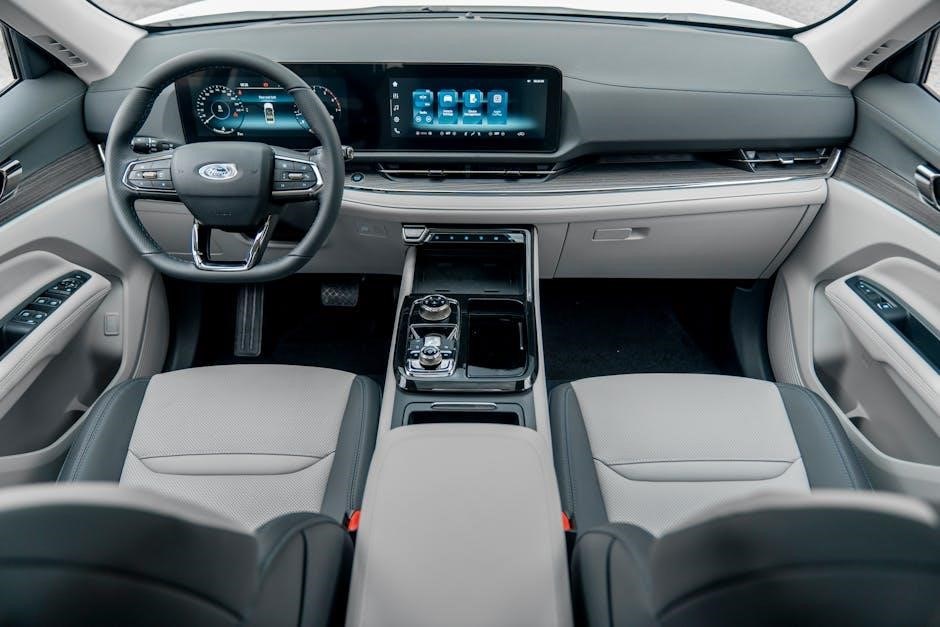
Erratic or jerky braking can also occur․ This might be due to incorrect gain settings or a faulty controller․ Try adjusting the gain settings first․ If the problem persists‚ the controller itself could be defective․ Consult the manufacturer’s troubleshooting guide or seek professional assistance if needed․ Always prioritize safety when troubleshooting brake controller issues․
Post-Installation Testing and Calibration
After installing your trailer brake controller in your Ford Ranger‚ thorough testing and calibration are crucial․ Begin by connecting your trailer and verifying that the controller recognizes it․ The controller display should indicate a connection․ Next‚ perform a low-speed test in a safe‚ open area․
Gradually increase the gain setting and apply the manual override lever on the controller․ You should feel the trailer brakes engaging smoothly and proportionally․ If the trailer brakes lock up or feel too weak‚ adjust the gain accordingly․ The goal is to achieve balanced braking where both the Ranger and trailer slow down evenly․
Test different braking scenarios‚ including gradual stops and more abrupt braking‚ to ensure consistent performance․ Pay attention to any unusual noises or vibrations․ Finally‚ consult your trailer and brake controller manuals for specific calibration recommendations․ Proper testing ensures safe and effective trailer braking․